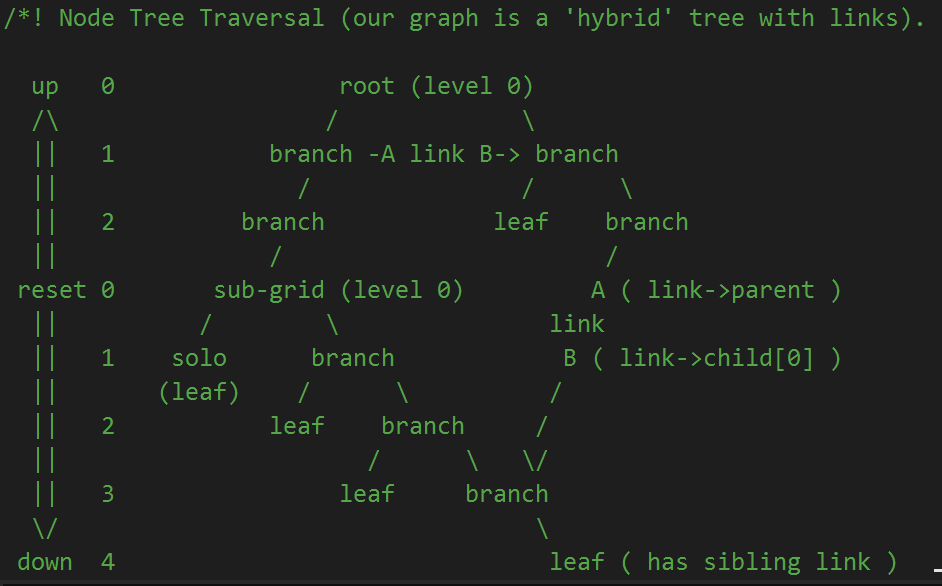-
Notifications
You must be signed in to change notification settings - Fork 13
Scene Graph
*Insert image of topo tree with links (both directed and not).
In order to view data in OpenANTz, raw data is converted into attributes of 3D models, like color, shape, and scale, etc. The template format is a 94 column node csv file. Each column represents a different potential attribute, and each row is a different 3D node, or object. Parent-child relationships between nodes generate hyperglyphs.
The files in the github 'antzviz' repository will help users recreate the node csv files, along with labeling files like a tag csv file format.
The Native Scene Graph is a collection of topological trees with LINKS. Our topologies are similar to joint based COLLADA Kinematics (ch 10) using a parent child link. The tree structure is NOT constrained to a traditonal tree graph and instead allows creating closed loops using a link. Our topologies are similar to various joints that rotate and slide. You can 'limit' specific axes movements to create a variety of kinematic systems.
We use a table of nodes, edges and links. Effectively the links are edges that are not part of the tree structure, and do not effect the tree in the same manor. Hence, links may be drawn between a pair of nodes belonging to the same tree which causes a closed loop. You may also link nodes from two seperate trees.
Our Native Scene Graph is a multi-dimensional visualization based on topologies governed by a Neural Physics Engine (NPE).
Our scene graph is a (hybrid) forest of trees. Where each hyperglyph is a (kinematic) topological tree hierarchy. A 'link' can be created between any two glyph (nodes) in the scene, which (of course) is an exception to the tree structure, (hence a hybrid forest). Also, links have a direction, from A-end (node->parent) to B-end (node->child[0]). Links are treated as siblings (to other glyphs) attached to both parents at A-end and B-end.
Note that grid (topo) nodes can be anywhere in a tree hierarchy and have the special property of reseting the branch level to zero. This allows for nesting datasets by treating all nodes connected to a sub-grid (including sub-grids) to behave as a distinct dataset that retains most of it's properties.
© 2023 Shane Saxon. All rights reserved.
Saxon Digital™, Neuralphysics™, Neural Physics Engine™, NPE™, PODmind™, 7viz™, FileViz™, GaiaViz™, CoderViz™, Csync™, lazyC™, Xr™, Xreality™, ANTz+Fx™, ANTz+™, OpenANTz™, ANTz+Xr™ and the ANTz+Xr™ logo, the Saxon Digital slogans, and the Saxon Digital product names are trademarks of Saxon Digital in the U.S. and/or other countries. All other product names, trademarks, and/or company names are used solely for identification and belong to their respective owners.
Maintained by: OpenANTz.com
